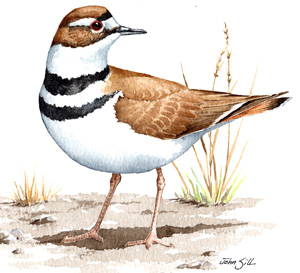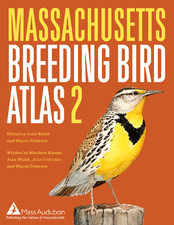 Conservation is a gamble on the future. While a complex array of drivers act on our natural systems to cause rapid changes in the landscape and the species we have come to love, we need to quickly adapt to make the best choices to preserve our natural heritage. That is not easy.
Conservation is a gamble on the future. While a complex array of drivers act on our natural systems to cause rapid changes in the landscape and the species we have come to love, we need to quickly adapt to make the best choices to preserve our natural heritage. That is not easy.
How do we make plans for protecting the most vulnerable species in the state? How can we ensure that we are making the right choices when we advocate for land acquisition and management? How can we be sure that our grandchildren will have the same opportunities to find wonder and solace in the Nature of Massachusetts?
One of the actions Mass Audubon took 10 years ago to help us prepare for the changing world we face today was to get a real inventory of the changes we had seen over the previous 35 years, and us that to help set priorities for our actions for the next 10 years. That inventory was the Massachusetts Breeding Bird Atlas 2.
From 2007 to 2011, more than 650 of your friends and neighbors joined Mass Audubon to conduct the massive Breeding Bird Atlas 2. We combed every bit of the Commonwealth, from Williamstown to New Marlboro, and from Nantucket to Salisbury in search of breeding birds. We compared the results of that work to work done in the 1970s and the results are amazing.
 We have two reports for you to dig into to learn all about the changes in the 222 species that nest in the state. First, we have the Massachusetts Breeding Bird Atlas 2—available as an eBook at iTunes, on our website species-by-species, and, coming soon, a print-on-demand book.
We have two reports for you to dig into to learn all about the changes in the 222 species that nest in the state. First, we have the Massachusetts Breeding Bird Atlas 2—available as an eBook at iTunes, on our website species-by-species, and, coming soon, a print-on-demand book.
Next, we have a summary of this work, State of the Birds 2013, which gives you the highlights of the Atlas project, and walks you through the planning process of designing recovery plans for declining species.
These documents are a milestone for Mass Audubon and for our members. Join us by reading, glancing through, browsing or devouring these document, then join us for discussion about what these data mean for the state and the region, and for our plans to continue to be the leader in protecting the birds of the state. Start the journey right here.
– Joan Walsh, Director of Bird Monitoring


